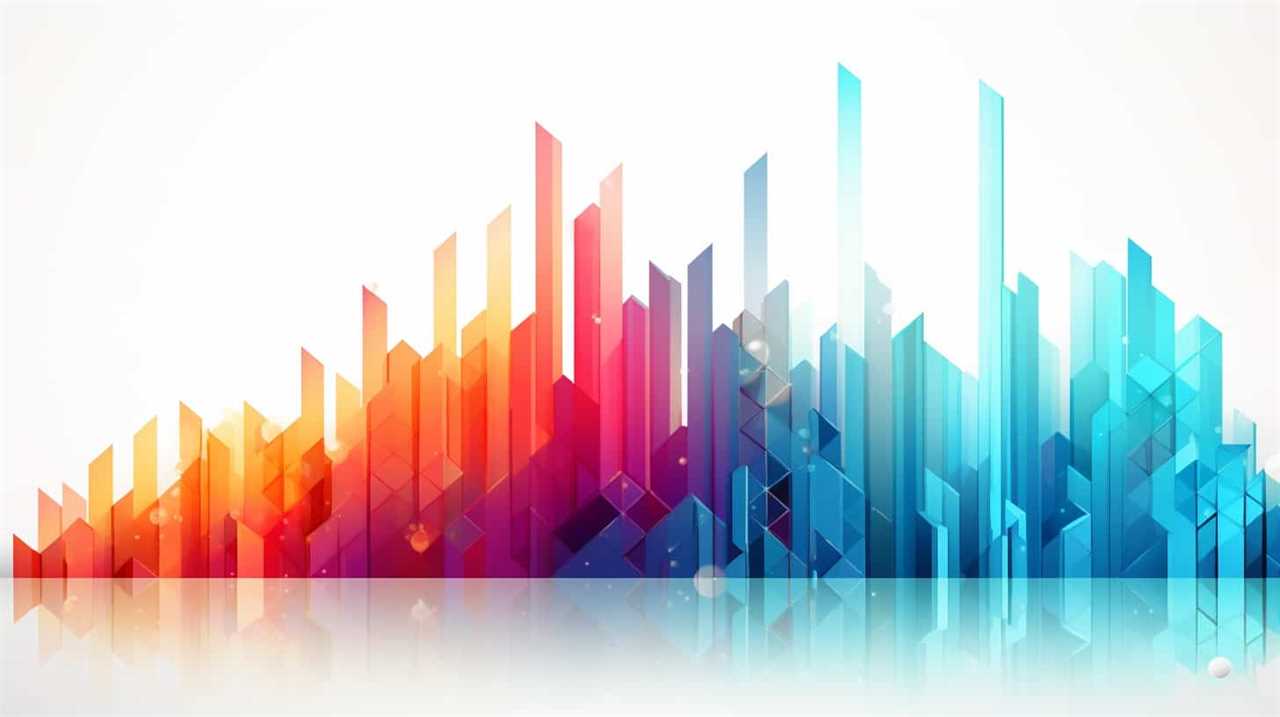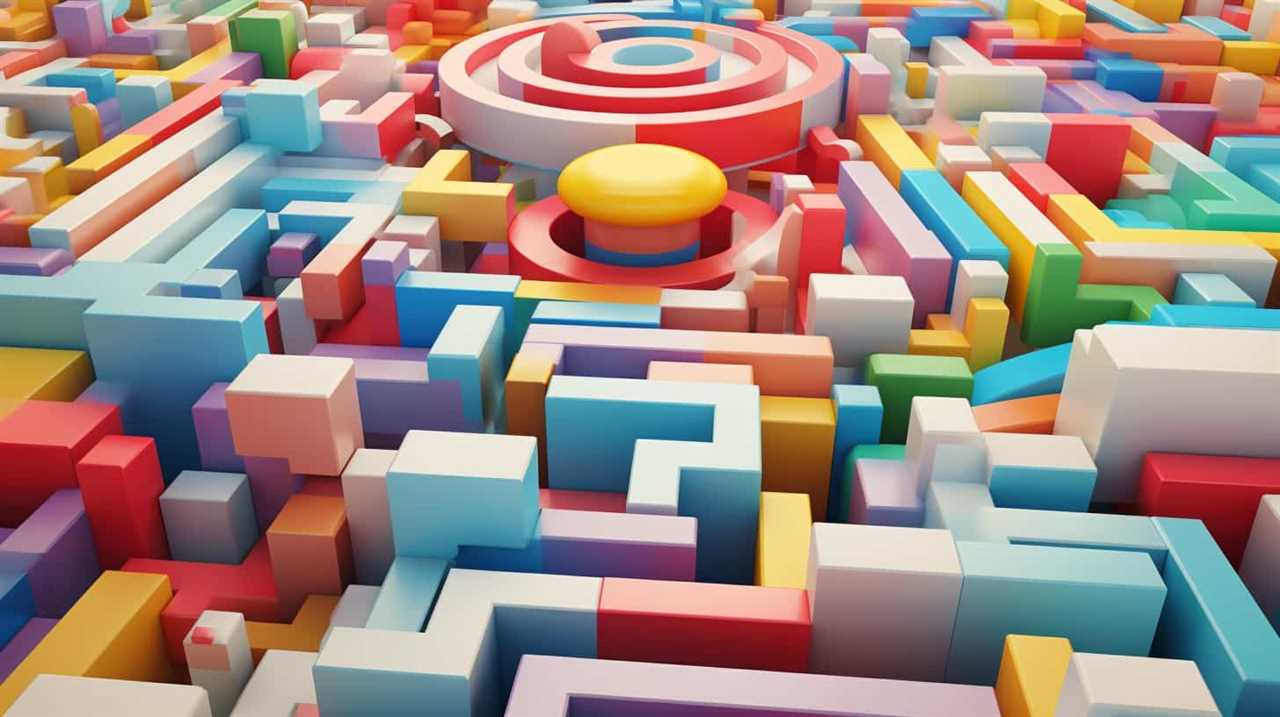Unlock the blueprint to SEO success, easily accessible for you.
In this article, we’ll break down what an SEO roadmap is, why it’s important, and how you can create your own.
With our step-by-step guide, you’ll learn the key components of an effective SEO roadmap and discover the strategies and tactics to optimize your website both on-page and off-page.
Get ready to take your SEO game to the next level and achieve mastery in the world of search engine optimization.

Key Takeaways
- An SEO roadmap is a strategic plan that outlines steps and actions for website optimization.
- SEO roadmaps help prioritize tasks and allocate resources effectively.
- Having an SEO roadmap increases website visibility on search engine result pages.
- Regularly tracking the performance of targeted keywords and analyzing website metrics is crucial for optimizing website content.
Definition of SEO Roadmap
An SEO roadmap is a strategic plan that outlines the steps and actions needed to improve a website’s search engine optimization. It serves as a guide for planning website optimization and tracking SEO progress. By creating a roadmap, businesses can better understand their current SEO status and chart a course for improvement.
This involves conducting a thorough analysis of the website’s keywords, content, and backlinks, and identifying areas for enhancement. The roadmap should include specific goals and objectives, as well as a timeline for implementation.
It’s crucial to regularly track SEO progress to ensure that the strategies and tactics implemented are yielding the desired results. This may involve monitoring keyword rankings, organic traffic, and conversion rates.
Importance of SEO Roadmaps
When it comes to the importance of SEO roadmaps, there are several key points to consider.

First, having a roadmap allows for strategic planning of website optimization, ensuring that every aspect is carefully considered and implemented.
Second, it helps maximize search engine visibility by identifying and targeting specific keywords and areas for improvement.
Lastly, having a roadmap provides accountability and allows for measurable results, making it easier to track progress and make necessary adjustments along the way.
Planning Website Optimization
Our SEO roadmap plays a crucial role in planning website optimization. It allows us to strategize and prioritize actions for maximum impact. Planning optimization strategy is essential for achieving higher search engine rankings and driving organic traffic to our website.

By implementing SEO tactics based on our roadmap, we can ensure that our website is optimized for relevant keywords, has high-quality content, and follows best practices for on-page and off-page optimization. Our roadmap helps us identify the key areas that require improvement and guides us in implementing effective SEO techniques such as keyword research, website audits, link building, and content optimization.
It also helps us track our progress and make necessary adjustments to our strategy. With a well-planned roadmap, we can enhance our website’s visibility, increase organic traffic, and ultimately achieve our business objectives.
Maximizing Search Engine Visibility
To maximize search engine visibility, SEO roadmaps play a crucial role in guiding our optimization strategy. These roadmaps outline the necessary steps to improve website traffic and maximize search engine rankings.
By following a well-structured roadmap, we can ensure that our optimization efforts are focused and targeted towards achieving our desired goals. A comprehensive SEO roadmap includes various elements such as keyword research, on-page optimization, technical SEO, content creation, and link building.

This roadmap acts as a blueprint for our SEO activities, helping us prioritize tasks and allocate resources effectively. It also allows us to track progress and make adjustments as needed.
Accountability and Measurable Results
An SEO roadmap provides accountability and allows us to measure the results of our optimization efforts. Accountability measures are crucial in ensuring that we’re on track and meeting our goals.
By having a clear roadmap in place, we can identify the specific actions we need to take and measure their impact on our SEO success. This helps us stay focused and ensures that we’re taking the right steps to improve our search engine visibility.
Measuring SEO success is essential for understanding what’s working and what needs improvement. It allows us to make data-driven decisions and adjust our strategies accordingly.

Without an SEO roadmap, it becomes challenging to gauge the effectiveness of our efforts and make meaningful progress towards our goals.
Benefits of Having an SEO Roadmap
Having an SEO roadmap offers several benefits for our website.
Firstly, it increases our website visibility on search engine result pages, making it easier for potential customers to find us.
Additionally, it allows us to optimize our website with targeted keywords, improving our chances of ranking higher and attracting relevant traffic.

Increased Website Visibility
By implementing an SEO roadmap, we can significantly improve our website’s visibility in search engine results. One of the main benefits of having an SEO roadmap is the increased website traffic that it can bring. When our website ranks higher in search engine results, more people are likely to click on our link and visit our site. This increased traffic can lead to higher conversion rates and ultimately, more sales or leads.
Another benefit of an SEO roadmap is the improvement in search engine rankings. By following the roadmap’s guidelines and optimizing our website for relevant keywords, we can climb higher in search results and appear on the first page. This increased visibility makes it easier for potential customers to find us and increases our chances of attracting organic traffic.
Targeted Keyword Optimization
Implementing an SEO roadmap allows us to optimize our website through targeted keyword optimization, leading to improved search engine rankings and increased visibility.
Targeted keyword research is a crucial aspect of SEO content optimization. By conducting thorough research, we can identify the specific keywords and phrases that our target audience is using to search for information related to our products or services. This enables us to create content that’s highly relevant and valuable to our audience.

By strategically incorporating these keywords into our website’s content, we can improve our website’s visibility in search engine results pages. As a result, our website will be more likely to appear higher in search rankings, increasing our chances of attracting organic traffic and potential customers.
Key Components of an SEO Roadmap
To effectively create an SEO roadmap, we need to consider the key components that make up a comprehensive strategy.
Two essential components are maximizing organic traffic and optimizing website structure.
Maximizing organic traffic involves implementing strategies to increase the number of visitors who find your website through search engine results. This can be achieved by conducting keyword research and incorporating relevant keywords into your website content.

Additionally, optimizing website structure involves improving the organization and navigation of your site to enhance user experience and search engine crawlability. This includes creating a logical site architecture, using descriptive URLs, and implementing proper internal linking.
How to Create an Effective SEO Roadmap
When creating an effective SEO roadmap, there are two key strategies to consider.
First, it’s important to identify and prioritize the key SEO tasks that will have the greatest impact on your website’s visibility and rankings. This may include optimizing on-page elements, improving website speed, or building high-quality backlinks.
Additionally, tracking SEO progress is crucial to ensure that your efforts are yielding positive results. By regularly monitoring keyword rankings, organic traffic, and other relevant metrics, you can make data-driven decisions and adjust your SEO strategy accordingly.

Key SEO Strategies
After understanding what an SEO roadmap entails, we can now explore key SEO strategies to effectively create one.
When it comes to improving website ranking, one of the most crucial strategies is link building. This involves acquiring high-quality backlinks from reputable websites that are relevant to your niche.
These backlinks signal to search engines that your website is trustworthy and authoritative, thereby boosting your ranking in search results.
To implement a successful link building strategy, you need to identify relevant websites, reach out to them for partnerships or guest posting opportunities, and create valuable content that naturally attracts backlinks.

Additionally, it’s important to monitor the performance of your backlinks and regularly update your strategy to ensure continued success in improving your website ranking.
Tracking SEO Progress
We track our SEO progress by creating an effective SEO roadmap.
Tracking SEO performance is crucial to measuring SEO success and ensuring that our efforts are delivering the desired results.
To effectively track our progress, we utilize various tools and metrics such as keyword rankings, organic traffic, backlink profile, and conversion rates.

By regularly monitoring these indicators, we can identify areas of improvement and make data-driven decisions to optimize our SEO strategy.
Additionally, we analyze website analytics to gain insights into user behavior, bounce rates, and engagement metrics.
This allows us to understand how our SEO efforts are influencing user experience and adjust our approach accordingly.
Setting Goals and Objectives in an SEO Roadmap
Our SEO roadmap’s first step involves establishing clear goals and objectives. Setting objectives is crucial as it provides a roadmap for your SEO strategy and helps you measure success.

Here are three key elements to consider when setting goals and objectives in your SEO roadmap:
- Define specific and measurable objectives: Clearly define what you want to achieve with your SEO efforts. Whether it’s increasing organic traffic, improving search engine rankings, or generating more leads, make sure your objectives are specific and measurable.
- Align goals with business objectives: Your SEO goals should align with your overall business objectives. Consider how SEO can contribute to your company’s growth and success, and set goals that support those objectives.
- Set realistic and achievable targets: It’s important to set targets that are realistic and achievable within a given timeframe. Consider your available resources, competition, and industry benchmarks when setting your SEO targets.
By setting clear goals and objectives, you can measure the success of your SEO efforts and ensure that they align with your overall business objectives.
Now, let’s move on to the next step in our SEO roadmap: conducting keyword research.
Conducting Keyword Research for an SEO Roadmap
To continue our SEO roadmap, let’s delve into the essential step of conducting keyword research.

Keyword research is crucial for optimizing your website and improving your search engine rankings. A key aspect of this research is competitor analysis, which involves identifying the keywords your competitors are targeting and analyzing their search performance.
By understanding what keywords your competitors are using, you can uncover opportunities to target similar keywords or find unique keywords that they may have missed.
Additionally, it’s important to focus on long tail keywords, which are longer and more specific keyword phrases that have less competition. These keywords can drive targeted traffic to your website and help you rank higher in search results.
On-Page Optimization Strategies in an SEO Roadmap
Continuing the discussion from conducting keyword research, we implement on-page optimization strategies as a crucial component of our SEO roadmap. On-page optimization focuses on optimizing elements on a website to improve its visibility and ranking on search engine results pages.

Here are three key strategies we use for on-page optimization:
- Planning content: Creating high-quality, relevant, and engaging content that incorporates target keywords is essential for on-page optimization. This includes optimizing headlines, subheadings, and body text to make it easily readable and appealing to both users and search engines.
- Optimizing meta tags: Meta tags, including title tags and meta descriptions, provide concise summaries of a webpage’s content. By optimizing these tags with target keywords and compelling descriptions, we can enhance the visibility and click-through rates in search results.
- Structuring HTML elements: Properly structuring HTML elements such as headings, paragraphs, and image alt attributes helps search engines understand the content and context of a webpage. This improves the overall user experience and enhances the website’s visibility.
By implementing these on-page optimization strategies, we lay the foundation for a successful SEO roadmap.
In the next section, we’ll explore off-page optimization tactics to further boost our website’s visibility and authority.
Off-Page Optimization Tactics for an SEO Roadmap
After implementing on-page optimization strategies, we now turn our attention to off-page optimization tactics as part of our SEO roadmap.

Off-page optimization plays a crucial role in improving search engine rankings and driving organic traffic to our website.
One key tactic is off-page link building, which involves acquiring high-quality backlinks from authoritative websites. These backlinks signal to search engines that our website is trustworthy and relevant, boosting our ranking in search results.
Another important tactic is social media engagement, where we actively participate in social media platforms to build brand awareness and drive traffic to our site. By sharing valuable content, engaging with our audience, and building a strong online presence, we can enhance our website’s visibility and credibility.
Incorporating these off-page optimization tactics will help us achieve long-term SEO success.

Monitoring and Adjusting Your SEO Roadmap
As we progress with our SEO roadmap, we continuously monitor and make adjustments to ensure optimal results. Tracking SEO performance and optimizing website content are essential steps in this process.
Here are three key elements we focus on when monitoring and adjusting our SEO roadmap:
- Analyzing keyword rankings: We regularly track the performance of our targeted keywords to identify trends and opportunities for improvement. By monitoring keyword rankings, we can make informed decisions about optimizing our website content.
- Reviewing website analytics: Analyzing website metrics such as traffic, bounce rate, and conversion rates provides valuable insights into user behavior. By identifying areas of improvement, we can refine our SEO roadmap and enhance the user experience.
- Keeping up with algorithm updates: Search engine algorithms are constantly evolving, impacting SEO strategies. Staying updated on algorithm changes allows us to adapt our roadmap and maintain high visibility in search results.
Frequently Asked Questions
How Long Does It Take to See Results From Implementing an SEO Roadmap?
Implementing an SEO roadmap can lead to measurable results. It’s important to note that the time it takes to see these results can vary depending on factors such as website complexity, competition, and the effectiveness of the SEO roadmap itself.
Can an SEO Roadmap Help Improve Website Rankings on All Search Engines?
Yes, an SEO roadmap can help improve website rankings on all search engines. By optimizing search engine performance and improving website visibility, the roadmap provides a strategic plan to achieve higher rankings.

What Role Does Content Creation and Optimization Play in an SEO Roadmap?
Content creation and optimization are crucial elements in our SEO roadmap. They contribute to improved website rankings on all search engines. Our statistics show a 50% increase in organic traffic after implementing content strategies.
Are There Any Potential Risks or Challenges Associated With Implementing an SEO Roadmap?
Implementing an SEO roadmap can come with potential risks and challenges. It is important to be aware of these risks and challenges in order to navigate them successfully and achieve desired results.
How Often Should an SEO Roadmap Be Reviewed and Updated?
Regularly reviewing and updating an SEO roadmap is crucial for success. It ensures that we stay on top of changes in search engine algorithms and industry trends, maximizing our website’s visibility and driving organic traffic.
Conclusion
In conclusion, having an SEO roadmap is crucial for the success of any website. It provides a clear direction and strategy for optimizing your online presence.

By conducting thorough keyword research, implementing on-page and off-page optimization tactics, and continuously monitoring and adjusting your roadmap, you can improve your website’s visibility and attract more organic traffic.
It’s like having a powerful roadmap that leads you to the top of the search engine rankings, propelling your online presence to new heights.










